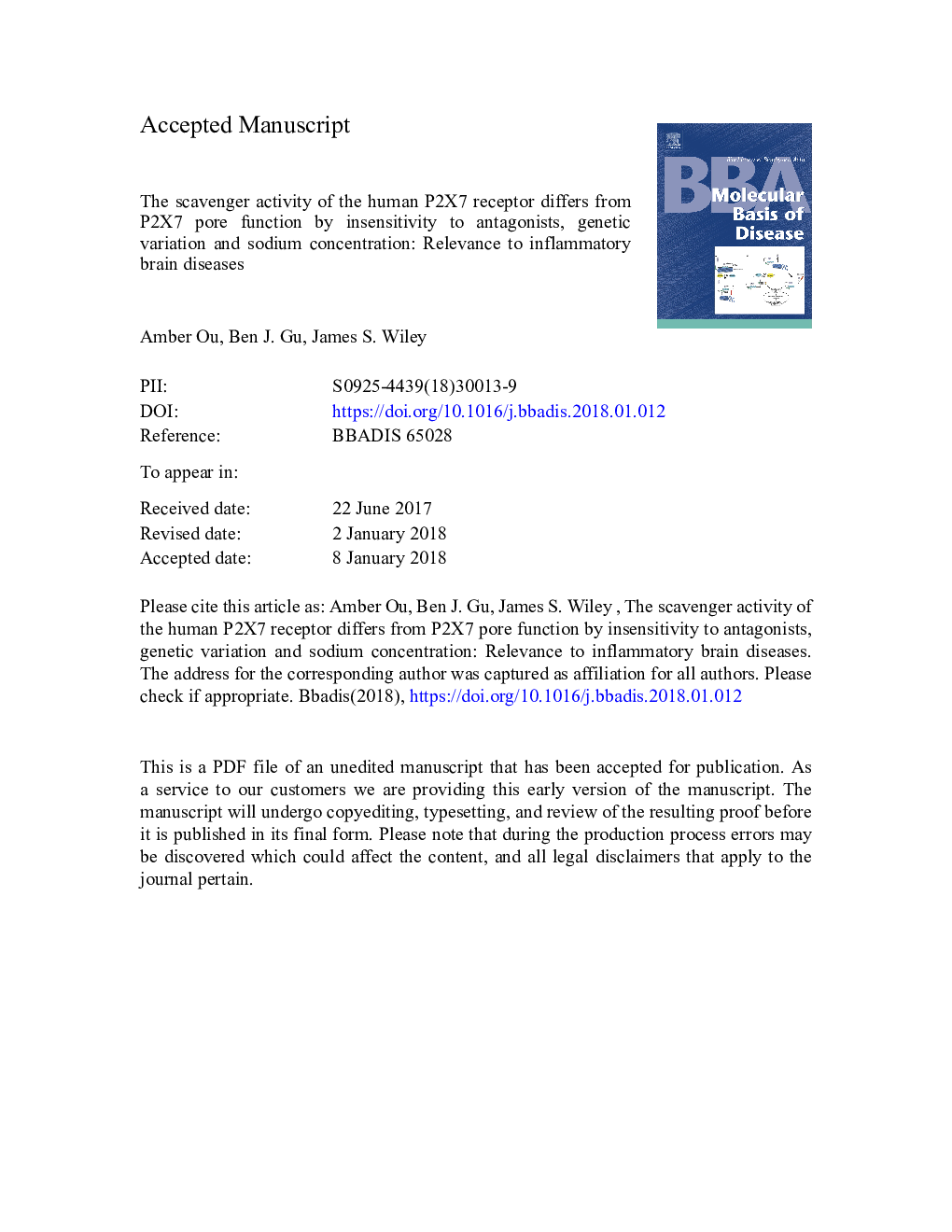| Article ID | Journal | Published Year | Pages | File Type |
|---|---|---|---|---|
| 8258568 | Biochimica et Biophysica Acta (BBA) - Molecular Basis of Disease | 2018 | 32 Pages |
Abstract
Activation of P2X7 receptors is widely recognised to initiate proinflammatory responses. However P2X7 also has a dual function as a scavenger receptor which is active in the absence of ATP and plasma proteins and may be important in central nervous system (CNS) diseases. Here, we investigated both P2X7 pore formation and its phagocytic function in fresh human monocytes (as a model of microglia) by measuring ATP-induced ethidium dye uptake and fluorescent bead uptake respectively. This was studied in monocytes expressing various polymorphic variants as well as in the presence of different P2X7 antagonists and ionic media. P2X7-mediated phagocytosis was found to account for about half of Latrunculin (or Cytochalasin D)-sensitive bead engulfment by fresh human monocytes. Monocytes harbouring P2X7 Ala348Thr or Glu496Ala polymorphic variants showed increase or loss of ethidium uptake respectively, but these changes in pore formation did not always correspond to the changes in phagocytosis of YG beads. Unlike pore function, P2X7-mediated phagocytosis was not affected by three potent selective P2X7 antagonists and remained identical in Na+ and K+ media. Taken together, our results show that P2X7 is a scavenger receptor with important function in the CNS but its phagocytic function has features distinct from its pore function. Both P2X7 pore formation and P2X7-mediated phagocytosis should be considered in the design of new P2X7 antagonists for the treatment of CNS diseases.
Keywords
Related Topics
Life Sciences
Biochemistry, Genetics and Molecular Biology
Ageing
Authors
Amber Ou, Ben J. Gu, James S. Wiley,
